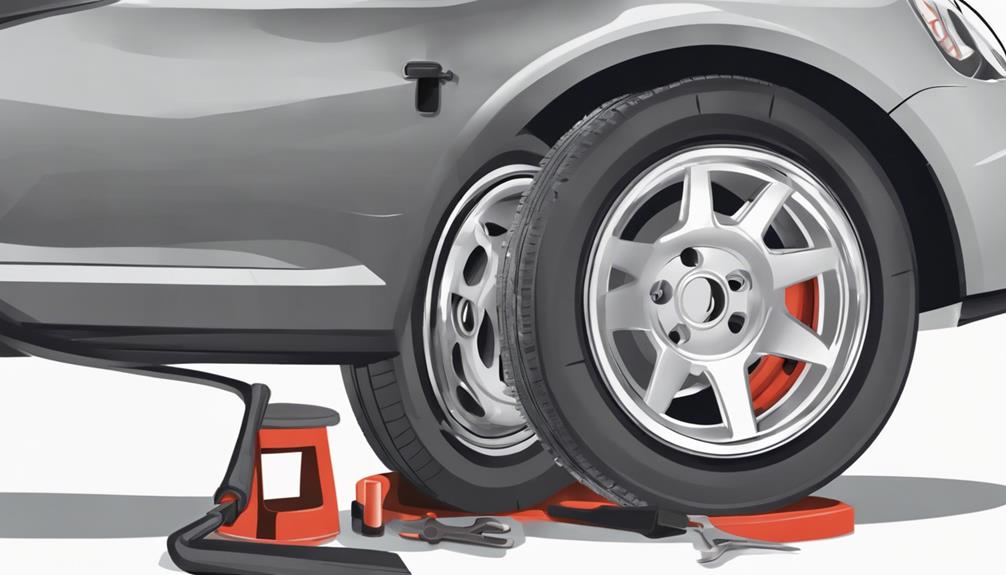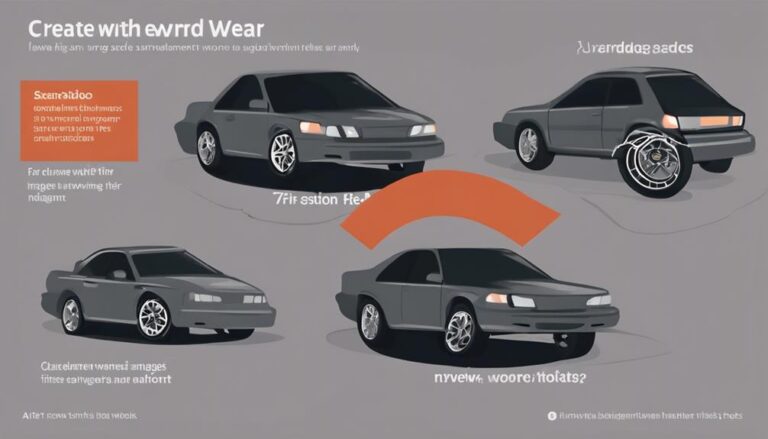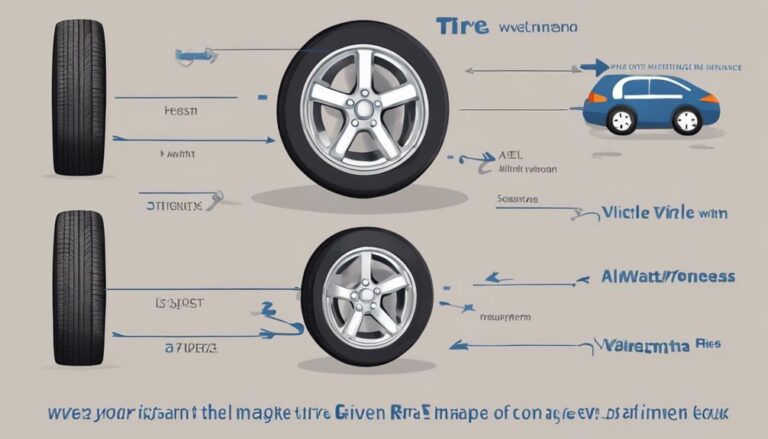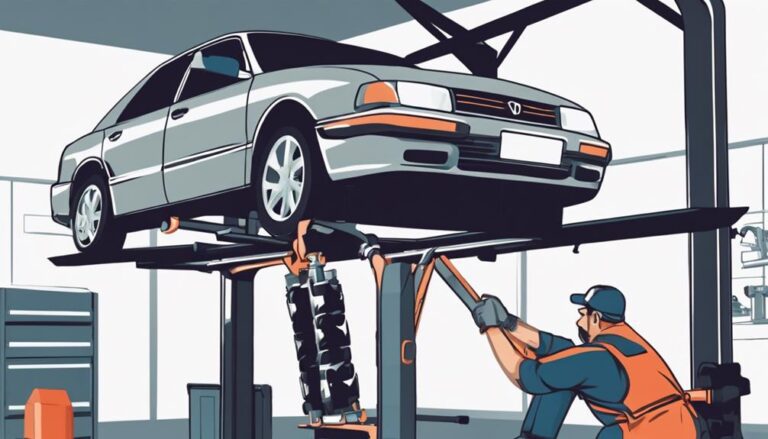DIY Tire Rotation and Alignment: Easy Steps Guide
Are you ready to tackle tire maintenance with precision and ease? Properly rotating and aligning your tires is crucial for optimal performance and safety on the road.
From identifying the rotation pattern to securing your tires in place, this guide simplifies the process.
But what about the lesser-known benefits of tire rotation and alignment? Stay tuned to discover how these simple steps can impact your vehicle's longevity and overall driving experience.
Key Takeaways
- Proper rotation patterns extend tire life and ensure even wear.
- Use reliable tools and follow safety precautions for successful rotation.
- Check alignment post-rotation for optimal handling and tire longevity.
- Maintain correct tire pressure and inspect tread wear patterns after rotation.
Tools Required for Tire Rotation
To perform a successful DIY tire rotation, the first step is to gather essential tools, including a hydraulic floor jack and a lug wrench. The hydraulic floor jack will provide the necessary lifting force to elevate the vehicle, allowing you to remove the wheels efficiently. Ensure the hydraulic floor jack is rated for the weight of your vehicle to prevent any accidents during the lifting process.
The lug wrench is essential for loosening and tightening the lug nuts that secure the wheels to the vehicle. It's crucial to use the correct size of the lug wrench to avoid damaging the nuts.
Having a reliable hydraulic floor jack and a sturdy lug wrench will make the tire rotation process smoother and safer. By using these tools properly, you can ensure that your vehicle is properly supported while you work on it. Remember to always follow safety guidelines when using the hydraulic floor jack and lug wrench to prevent any mishaps during the DIY tire rotation.
Identifying the Rotation Pattern
Determining the rotation pattern for your tires is crucial for ensuring optimal performance and longevity. The rotation pattern depends on factors such as the type of tires (directional or non-directional) and the drive system of your vehicle (front-wheel, rear-wheel, or all-wheel drive). To identify the correct rotation sequence, consult specific guidelines provided by your tire manufacturer or vehicle manual. This step is essential to promote even wear patterns across all tires, maximizing their lifespan and ensuring a smooth driving experience.
To assist you further, here is a table outlining common rotation patterns based on tire type and drive system:
| Tire Type | Drive System | Rotation Pattern |
|---|---|---|
| Directional | Front-Wheel Drive | Front to Back |
| Directional | Rear-Wheel Drive | Back to Front |
| Directional | All-Wheel Drive | X-Pattern |
| Non-Directional | Front-Wheel Drive | Front to Back |
| Non-Directional | Rear-Wheel Drive | Front to Back |
| Non-Directional | All-Wheel Drive | X-Pattern |
Analyzing tire wear regularly and following the recommended rotation frequency will help maintain optimal performance and extend the life of your tires.
Loosening and Jacking Up the Car
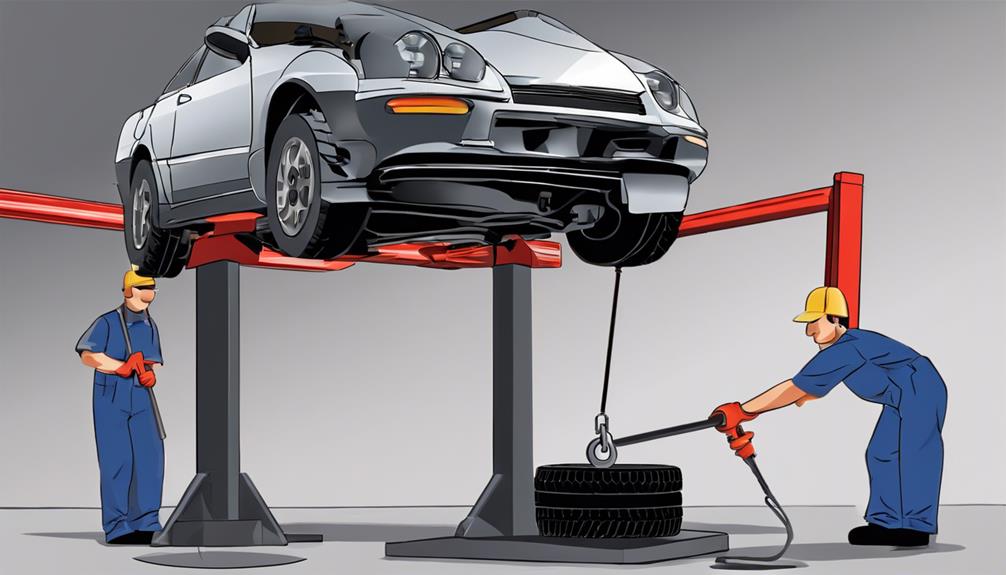
Before proceeding with loosening and jacking up the car, ensure you have the necessary tools and equipment ready for a safe and efficient tire rotation process. Proper technique and safety precautions are crucial for a successful DIY tire rotation. Here are some essential steps to follow:
- Loosen Lug Nuts: Begin by loosening the lug nuts on all wheels to prepare for tire removal without fully removing them. This step is vital for an easy tire replacement process.
- Use Hydraulic Floor Jack: Utilize a hydraulic floor jack to lift the car securely for tire rotation. Ensure the jack is positioned correctly to avoid any mishaps during the lifting process.
- Position Jack Stands: Always use jack stands in conjunction with the floor jack for added safety. Position the jack stands according to the vehicle's manual for proper support while working on the tires.
Following these steps with precision will help you achieve a successful and safe DIY tire rotation.
Removing, Rotating, and Reinstalling Tires
After ensuring the lug nuts are loosened and the car is safely jacked up, the next step involves removing, rotating, and reinstalling the tires following the recommended sequence for even wear patterns. It is crucial to remember the specific rotation pattern based on tire type and drive type to promote uniform tire wear. By adhering to the proper rotation sequence, you can extend the lifespan of your tires and optimize their performance on the road. When reinstalling the tires, make sure to align and position them correctly to maintain stability and handling. Here are some maintenance tips to guide you through the tire rotation process:
| Maintenance Tips | Tire Wear |
|---|---|
| Follow rotation pattern | Ensure even wear patterns |
| Align tires properly | Promote longevity |
| Position tires correctly | Optimize performance |
| Hand-tighten lug nuts first | Enhance safety |
Finalizing the Tire Rotation and Alignment
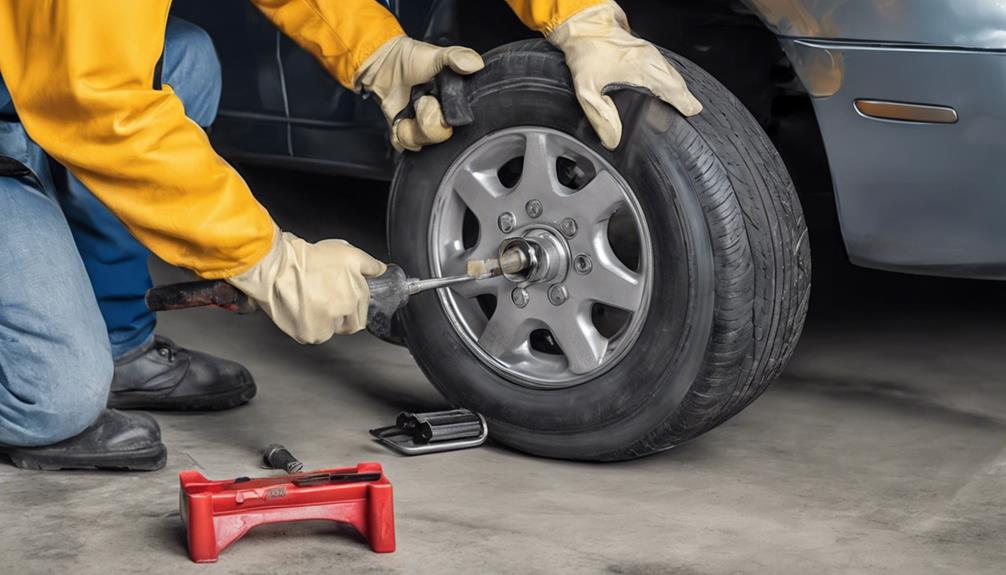
To ensure optimal performance and safety, the final step in the tire rotation and alignment process involves meticulously inspecting the lug nuts, tire pressure, and alignment to guarantee proper installation and functionality.
- Check Tire Pressure: After rotating your tires, it's crucial to verify and adjust the tire pressure according to the manufacturer's recommendations for even wear and proper handling.
- Inspect Alignment: Examine the tread wear patterns on each tire post-rotation to detect any alignment issues that may require adjustment to prevent uneven wear and ensure vehicle stability.
- Perform Test Drive: Take your vehicle for a test drive at various speeds to confirm proper handling and absence of vibrations, indicating a successful tire rotation and alignment.
Frequently Asked Questions
Can I Do a Tire Rotation Myself?
Yes, you can do a tire rotation yourself. It's a crucial aspect of tire maintenance and DIY car care. With basic tools and the right rotation pattern, you'll ensure even wear and optimal tire performance.
How Do You Rotate Tires Step by Step?
When it comes to tire maintenance, DIY tips are key. Start by loosening lug nuts, following the rotation pattern, using a hydraulic jack and stands, rotating tires in sequence, and tightening lug nuts properly.
Can I Rotate My Own Tires Without Balancing Them?
Yes, you should not rotate your tires without balancing them for proper tire maintenance. Balancing ensures even wear and smooth driving. Neglecting wheel alignment during rotation can lead to vibrations, reduced lifespan, and safety risks.
What Is the Best Pattern to Rotate Tires?
To ensure optimal tire wear and alignment, the best rotation pattern depends on factors like tire type and wear patterns. Following the manufacturer's recommendation maintains balance and prolongs tire lifespan, enhancing traction and handling.
Conclusion
Congratulations on successfully completing the DIY tire rotation and alignment process! By following the easy steps outlined in this guide, you have ensured that your tires are in optimal condition for safe and efficient driving.
Just like a well-oiled machine, your vehicle is now ready to tackle the road with precision and stability.
Keep up the good work in maintaining your tires and enjoy the benefits of extended lifespan and improved performance. Drive on with confidence!

